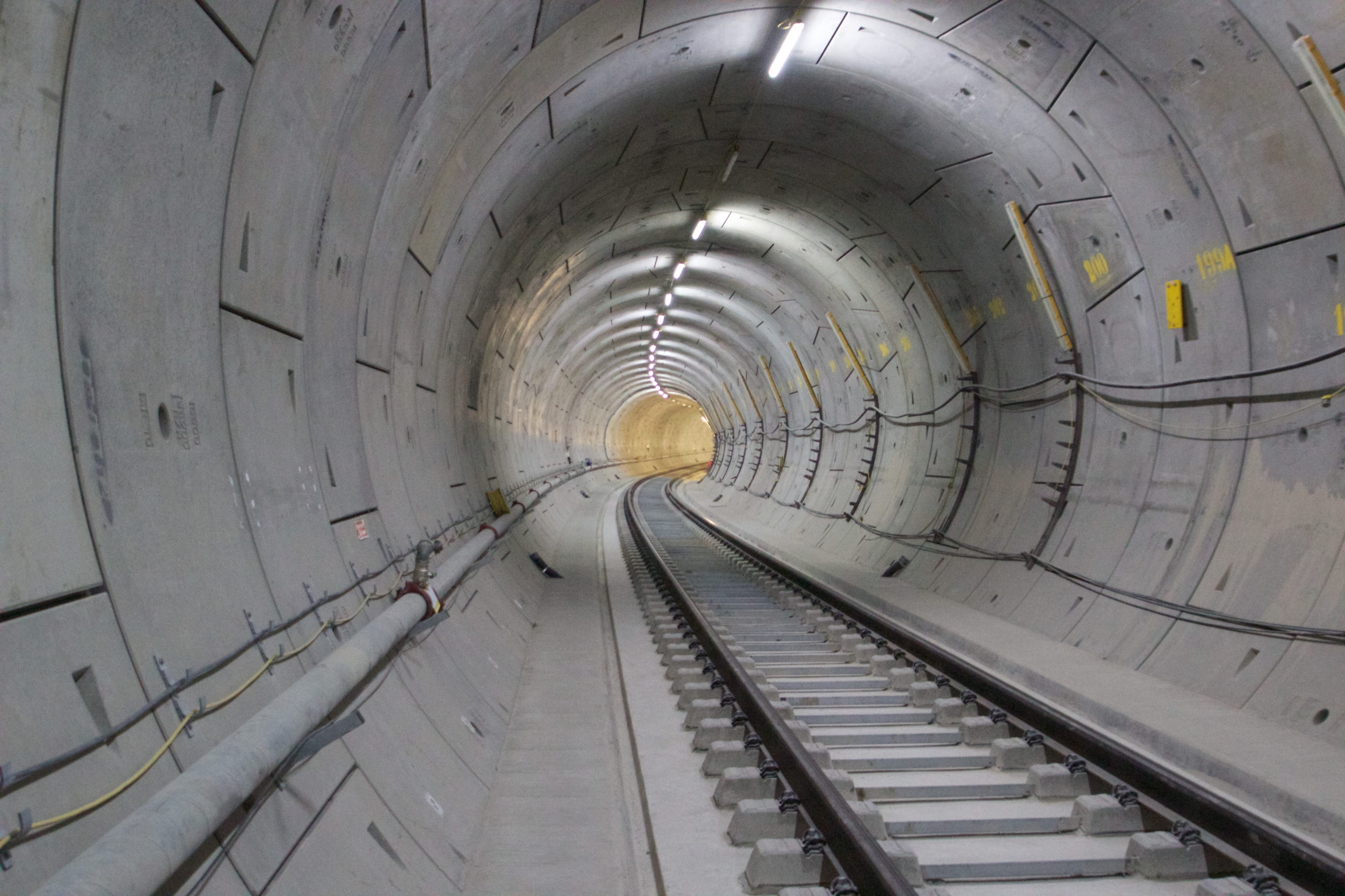United Kingdom, London – TSO confirms its innovative positioning as the Elizabeth line opens to the public
TSO signed a contract in 2013 to design, develop, test, and commission the railway systems of Crossrail's tunnel network throughout London as part of Crossrail's Joint Venture ATC with Alstom and Costain. Track, overhead wires, electromechanical, tunnelling equipment, and ventilation were all included in the deal. Crossrail, Europe's largest engineering project, runs 118 kilometres from east to west across London, with two 21km bored tunnels and ten new stations in the city's heart.
TSO’s teams exhibited their capacity to conceptualise, develop, and successfully implement ambitious and innovative methods and equipment, including a concrete train, tractorail, semi-robotic drilling rig, and Multi-Purpose Gantry, to enable a successful and high-quality delivery for this challenging project.
A completely revisited concrete train
On this extensive project, NGE’s subsidiary were carrying out the construction of 2x25km of underground concrete track, similar to the Channel Tunnel Rail Link.
To solve the location’s special constraints: accessibility with an underground site going through a densely populated urban area, a lack of neighbouring tracks to employ traditional railway machinery, and significant distances between the concreting area and the supply point… This concrete train proved to be an excellent solution for meeting the needed concrete volume and advancement rates.
To work in single slab track tunnels, the JV required a totally autonomous on track movable concrete mixing plant: the concrete train. With onboard concrete pumping and a lot of autonomy, it can store enough aggregates to make 250m3 of concrete.
World’s leading productivity of up to 370+ metres of concreted slab track per day.
Tractorail: reducing gas emissions
A bespoke engineered traction unit with a tractive effort of more than 70 tonnes, designed to allow a slow and continuous movement of the concrete train in gradients up to 4%. It allows for precise movement of the train when concrete is being pumped, reducing waste, and improving safety of the concrete finishing team.
It is a great asset when working in tunnels, as it requires 28 times less horsepower than classic locomotives and emits far less harmful gases and particles.
Multi-Purpose Gantry (MPG): improving safety and efficiency
To facilitate track work and logistics in single track tunnels, TSO reused previous design from its Channel Tunnel Rail Link 2 project machines to create the Multi-Purpose Gantry. Four machines were built for the Crossrail project.
With its lifting capacity of 15 tonnes, its automatic guiding system, its eight wheels along the tunnel walkways, this machine is an asset to move materials and equipment into and within the tunnel while avoiding the track in progress.
The MPG can also be equipped with different accessories to enable a range of activities, such as, track components installation. It therefore limits the number of machines required in the tunnel to carry out the works, improving safety for our employees.
“TSO took an ambitious initiative to use a methodology relying so much on a brand new engine that had never been tested before. The MPG was a great success and allowed us to deliver the required output on time.” Laurent BURGUIERES, TSO International Plant and Equipment Director
Semi-robotic drilling rig: maximising safety and productivity
The JV collaboratively developed a semi-robotic drilling rig to drill the 250,000 holes needed into the segments of the tunnel.
It increases the precision of the operation, improve the production output and drastically improve both safety and ergonomics to avoid dangerous and tiring working positions.
“Crossrail is one of TSO’s major railway references and we are proud to have been such a key player in this extraordinary project, as part of the ATC Joint Venture. Facing such a complex project brought out the best in our teams, harnessing their innovative spirit to develop new methodology and equipment. Building on this success, TSO now has experienced teams who can implement these effective and innovative solutions on future sustainable mobility projects.”
Orso Vesperini, Chief Operating Officer International & Major Projects
“This success has since paved the way for other incredible projects in UK: the CP6 contract with numerous track renewals, the Plumstead rail depot, the King’s Cross station upgrade, and the deployment of high-speed fiber optics in the Liverpool area. Thanks to their expertise acquired on the Crossrail project, our NGE and TSO teams have now spread all around the world to Canada, Uruguay, on the Grand Paris Express project in France… to bring a strong added value to finance, design, build and maintain major sustainable mobility projects.”
Gilles PHILIBERT, TSO International CEO
Key Figures for ATC scope of works:
• Tunnel twin-tube: 54 km of concrete single track and 16 switches and crossings
• Depot and mainline connection areas: 4 km of single ballast track and 15 switches and crossings
• 4 different designs of slab track installed to mitigate ground borne noise and vibration:
o Standard Track Slab (80% of the project) – Bi-block booted sleeper system encasing resilient pads
o High Attenuation System (3km of track) – Monoblock booted sleeper system using heavy weight concrete and resilient pads, installed for the first time on Crossrail
o Floating Track Slab [elastomer] (2km of track) – reinforced heavy-weight concrete slabs supported by discrete elastomeric bearings, installed under Soho
o Floating Track Slab [spring] (1.3km of track) – reinforced concrete slabs supported by steel springs, installed under the Barbican Centre (concert hall, theatres, cinema, studios)
• Power supply: 48 km of rigid catenary and 6 km of conventional overhead line
• Axle load: max 23 tons for maintenance trains, 16 tons for passenger trains
• Speed: up to 100 km/h (conception 110 km/h)
• Traffic data: 24 trains/hour, 16 hours/day
Key benefits Elizabeth line:
• 42 km of new tunnels
• 13 years of construction with 10,000 people at the peak of construction
• 10 new stations in London
• 12 trains per hour, each carrying up to 1,500 visitors
